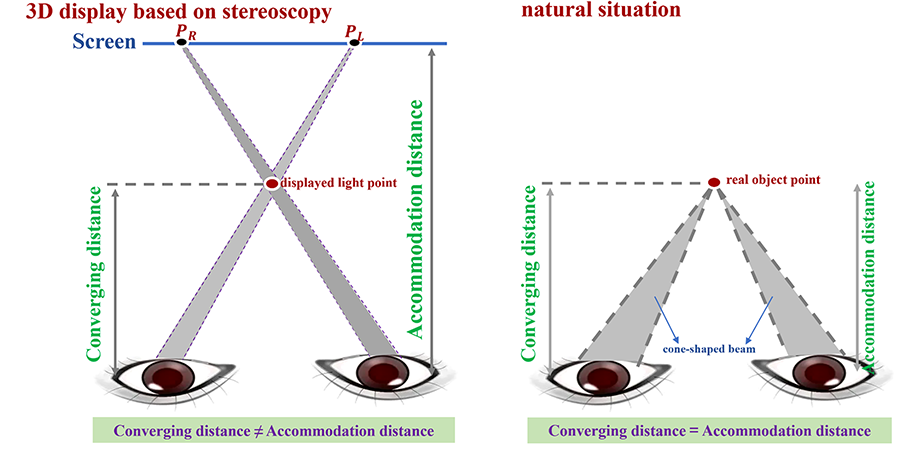A possible cure for the near-3D visual fatigue hangover

Near-eye 3D display technology can deliver virtual-reality (VR) magic—and a headache from visual fatigue. In fact, this 3D hangover has become a bottleneck hindering the popularization of 3D display technology as well as next-generation 3D display applications.
Existing technology for 3D VR headsets relies on a stereoscopic display in which the screen is a virtual image of a display panel for each eye. Unfortunately, this setup generates a discrepancy between the convergence distance and the focusing distance for the human eye, known as a vergence accommodation conflict (VAC), resulting in visual fatigue.
Now, researchers in China propose a super multiview display (SMV) system. In brief, to simulate the cone-shaped beam from a real object point, two or more light rays in the cone-shaped beam perceived by an eye under the natural situation are downsampled. Through the optical elements in the SMV display, these sampled light rays are emitted from pixels of the display screen and converge into a real spatial light point that the eye can focus on naturally. In an SMV display, lots of overlapped light points construct up a 3D image free from VAC, the researchers say.
The team's experimental device consisted of only two OLED microdisplay/projecting lens pairs. A gating-aperture array, capable of being gated sequentially, was attached to each projecting lens's exit pupil. Through sequentially gating different segments of the projecting lens's exit pupil and synchronously refreshing the microdisplay with the corresponding perspective view, they report experimental evidence of consistent convergence distance and focusing distance that should in turn prevent visual fatigue.
Read the article by Lilin Liu et al., "Super multi-view near-eye 3D display with enlarged field of view," Opt. Eng. 60(8), 085103 (2021). doi 10.1117/1.OE.60.8.085103
| Enjoy this article? Get similar news in your inbox |
|



